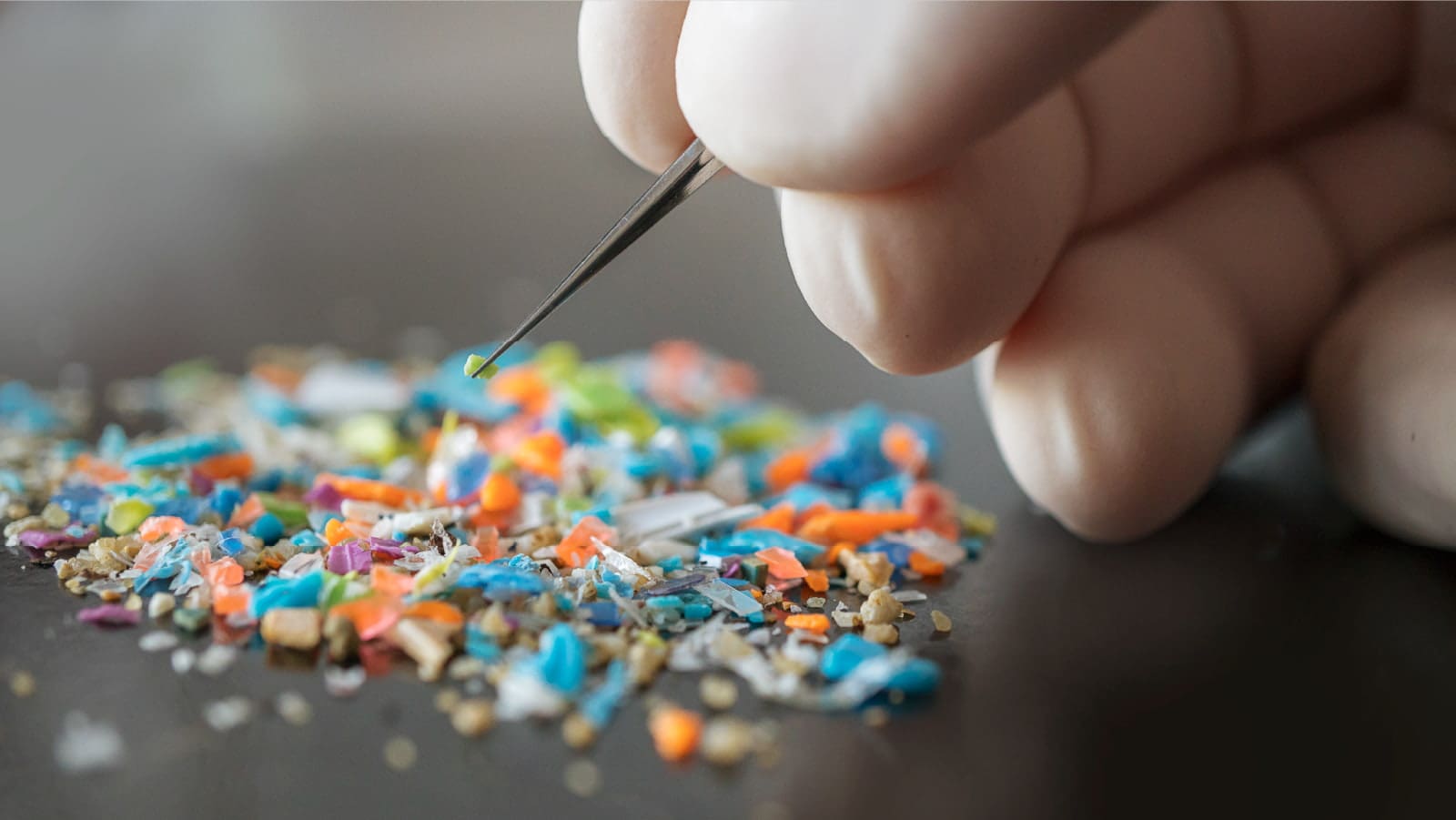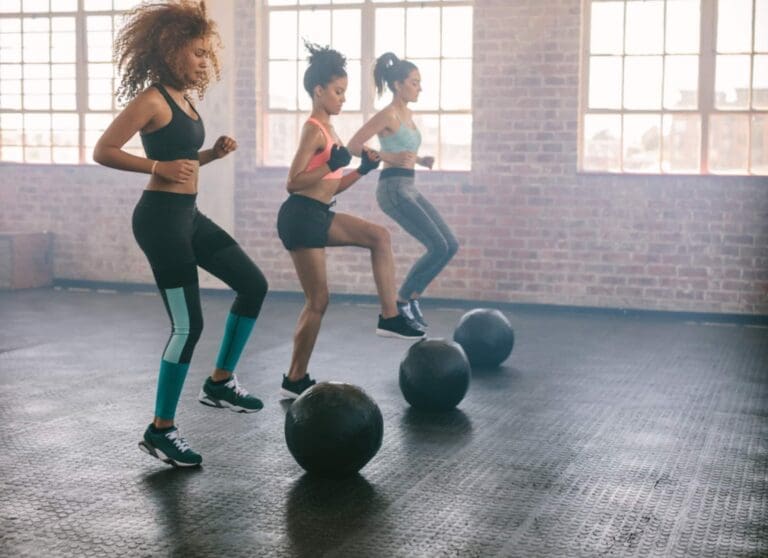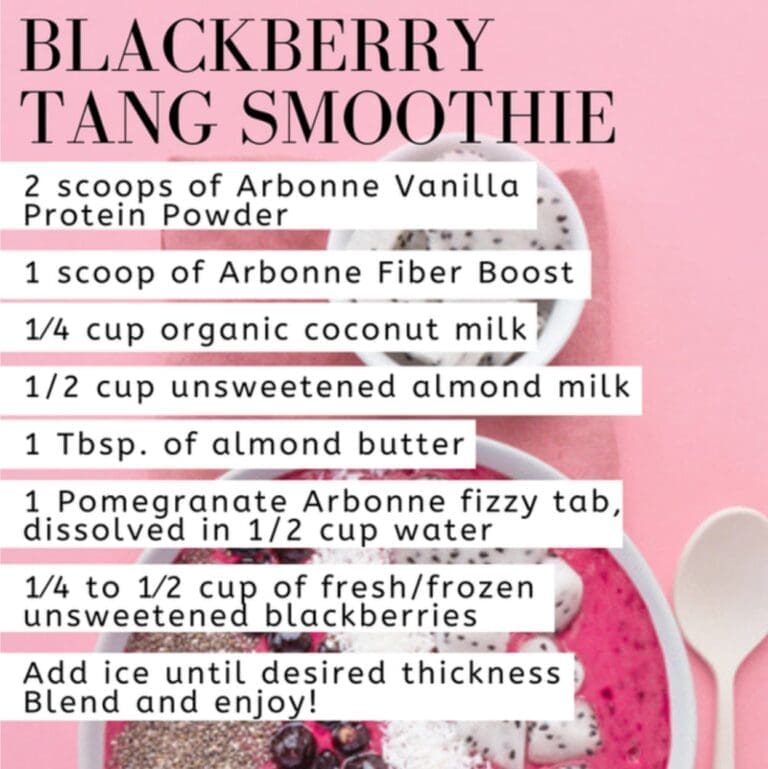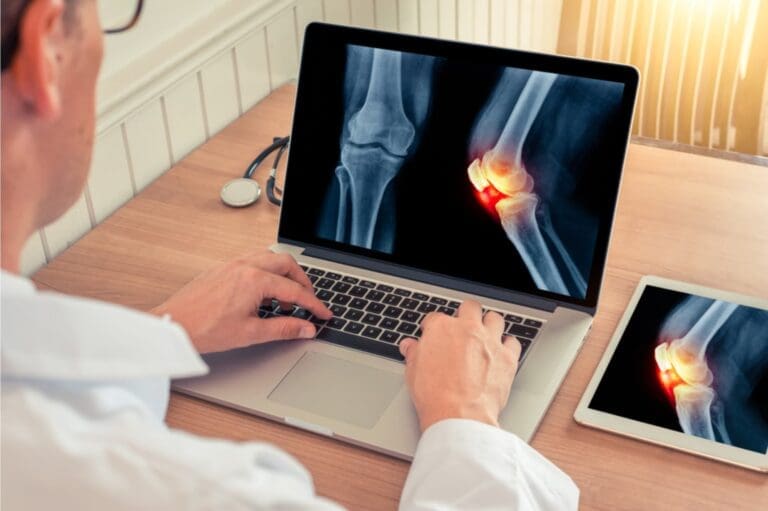We independently review everything we recommend. When you buy through our links, we may earn a commission. Learn more›
Introduction
Hey there, fitness enthusiasts! Holly Roser here, your go-to personal trainer in Manhattan. Today, we’re diving into a topic that’s been making waves in the health and environmental scenes: microplastics. You’ve probably heard the buzz, but what’s the real deal with these tiny synthetic invaders, and how might they be affecting your health and fitness journey?
As we navigate this increasingly synthetic world, it’s crucial to understand the potential impacts of microplastics on our bodies and what we can do to minimize our exposure. So, let’s roll up our sleeves and get to the bottom of this plastic predicament!
What Are Microplastics?
The Invisible Invaders
Microplastics are exactly what they sound like – tiny bits of plastic smaller than 5 millimeters in size. They’re the pesky little fragments that break off from larger plastic items like water bottles, synthetic clothing, and even some cosmetics. These minuscule menaces are so small that they’ve managed to infiltrate just about every corner of our environment – from the deepest ocean trenches to the air we breathe.
Sources of Microplastics
You might be surprised to learn just how many everyday items contribute to the microplastic problem:
- Synthetic clothing (think polyester and nylon)
- Cosmetics and personal care products
- Plastic bags and packaging
- Car tires (yes, really!)
- Industrial processes
The Ubiquity of Microplastics
They’re Everywhere!
It’s not an exaggeration to say that microplastics are omnipresent. They’ve been found in the most remote parts of our planet, from Arctic snow to the depths of the Mariana Trench. But what’s really concerning is their presence in our food, water, and even the air we breathe.
A recent study published in the journal “Environmental Science & Technology” found that the average person ingests about 5 grams of plastic every week – that’s about the weight of a credit card! The researchers analyzed data from 26 previous studies to estimate the amount of microplastics in common foods and beverages [1].
“Microplastics are ubiquitous across ecosystems, and their presence in the human body is unavoidable in the modern world,” the study authors noted.
This ubiquity means that no matter how health-conscious we are, we’re all likely exposed to some degree of microplastic pollution. But don’t panic just yet – let’s explore what this might mean for our health.
Health Implications of Microplastics
The Potential Risks
While research on the health effects of microplastics is still in its early stages, scientists are concerned about several potential risks:
- Physical damage: Microplastics could potentially cause inflammation or damage to our digestive system.
- Chemical leaching: Many plastics contain additives like phthalates and bisphenols, which could leach into our bodies.
- Carrier effect: Microplastics might act as carriers for other environmental pollutants, potentially increasing our exposure to harmful substances.
What the Research Says
A groundbreaking study published in the “Journal of Hazardous Materials” in 2022 detected microplastics in human blood for the first time. The researchers found that 17 out of 22 study participants (77%) had quantifiable amounts of plastic particles in their blood samples [2].
This discovery raises concerns about the potential for microplastics to be transported to various organs in our bodies. While the long-term effects are still unknown, these findings underscore the need for further research and precautionary measures.
Microplastics and Fitness
Impact on Physical Performance
As a personal trainer, I’m particularly interested in how microplastics might affect our physical performance and overall fitness. While direct studies on this are limited, we can make some educated guesses based on what we know:
- Inflammation: If microplastics cause inflammation in our bodies, this could potentially impact recovery times and overall performance.
- Endocrine disruption: Some plastics contain chemicals that can interfere with our hormones, which play a crucial role in muscle growth, fat loss, and energy levels.
- Respiratory concerns: Inhaling microplastics could potentially affect lung function, which is crucial for cardiovascular fitness.
Nutrition Considerations
Microplastics have been found in many of the foods we rely on for optimal nutrition, including:
- Seafood
- Fruits and vegetables
- Bottled water
This doesn’t mean we should avoid these foods altogether – their benefits still outweigh the potential risks. However, it’s worth considering ways to minimize exposure while maintaining a balanced diet.
Minimizing Your Exposure to Microplastics
Practical Tips for Everyday Life
While it’s impossible to completely avoid microplastics in today’s world, there are steps we can take to reduce our exposure:
- Filter your water: Invest in a quality water filter that can remove microplastics.
- Choose natural fibers: Opt for clothing made from natural materials like cotton, wool, or bamboo when possible.
- Ditch single-use plastics: Carry a reusable water bottle and shopping bags.
- Cook at home: Preparing meals at home can help reduce exposure from food packaging and takeout containers.
- Vacuum regularly: Regular vacuuming can help remove microplastics that settle in household dust.
Fitness-Specific Strategies
As fitness enthusiasts, we can take some additional steps:
- Choose natural yoga mats: Many yoga mats are made from PVC. Look for alternatives made from natural rubber or cork.
- Opt for stainless steel or glass water bottles: These are durable alternatives to plastic for your workouts.
- Be mindful of synthetic workout gear: While it’s not always practical to avoid synthetic materials in activewear, look for brands that use recycled materials or have eco-friendly practices.
The Bigger Picture: Environmental Impact
Beyond Personal Health
It’s important to remember that the microplastic problem extends far beyond our personal health. These tiny particles are having a devastating impact on marine life and ecosystems worldwide. By taking steps to reduce our plastic consumption and properly dispose of plastics, we’re not just protecting our own health, but also contributing to the health of our planet.
Conclusion
As we navigate this synthetic world, it’s clear that microplastics present a complex challenge to our health and fitness goals. While the full extent of their impact is still being studied, the evidence suggests that it’s wise to take precautionary measures.
Remember, fitness isn’t just about what we do in the gym – it’s about making choices that support our overall health and well-being. By being mindful of our plastic use and taking steps to reduce our exposure to microplastics, we’re investing in our long-term health and the health of our environment.
Call to Action
Ready to take your health and fitness to the next level while minimizing your environmental impact? At Holly Roser Fitness, we’re committed to helping you achieve your goals in a way that’s good for you and the planet. Whether you’re looking to improve your workout routine, optimize your nutrition, or simply live a healthier lifestyle, we’re here to guide you every step of the way.
Book a free consultation with us today, and let’s create a personalized plan that aligns with your fitness goals and environmental values. Together, we can build a healthier future – for ourselves and for our planet. Visit Holly Roser Fitness to learn more about our services and to schedule your first session.
Remember, every small step counts. By making conscious choices about our fitness routines and daily habits, we can make a big difference in our personal health and the health of our environment. Let’s start this journey together!
Recommended Products for Microplastic-Free Fitness
To enhance your eco-friendly fitness journey, consider these carefully selected products:
| Stainless Steel Water Bottle – Durable, BPA-free, and perfect for workouts | $24.99 at Amazon |
| Natural Rubber Yoga Mat – Eco-friendly and non-slip for your practice | $59.99 at Amazon |
| Organic Cotton Workout Clothes Set – Breathable and microplastic-free | $79.99 at Amazon |
| Glass Food Storage Containers – For meal prep without plastic | $34.99 at Amazon |
Recommended Reading
| “Plastic Free: How I Kicked the Plastic Habit and How You Can Too” by Beth Terry | Check price on Amazon |
| “Eat Like You Care: An Examination of the Morality of Eating Animals” by Gary L. Francione and Anna Charlton | Check price on Amazon |
References
- Cox, K. D., Covernton, G. A., Davies, H. L., Dower, J. F., Juanes, F., & Dudas, S. E. (2019). Human Consumption of Microplastics. Environmental Science & Technology, 53(12), 7068-7074. https://doi.org/10.1021/acs.est.9b01517
- Leslie, H. A., van Velzen, M. J. M., Brandsma, S. H., Vethaak, A. D., Garcia-Vallejo, J. J., & Lamoree, M. H. (2022). Discovery and quantification of plastic particle pollution in human blood. Environment International, 163, 107199.









